Best Trekking Poles For Hiking and Backpacking
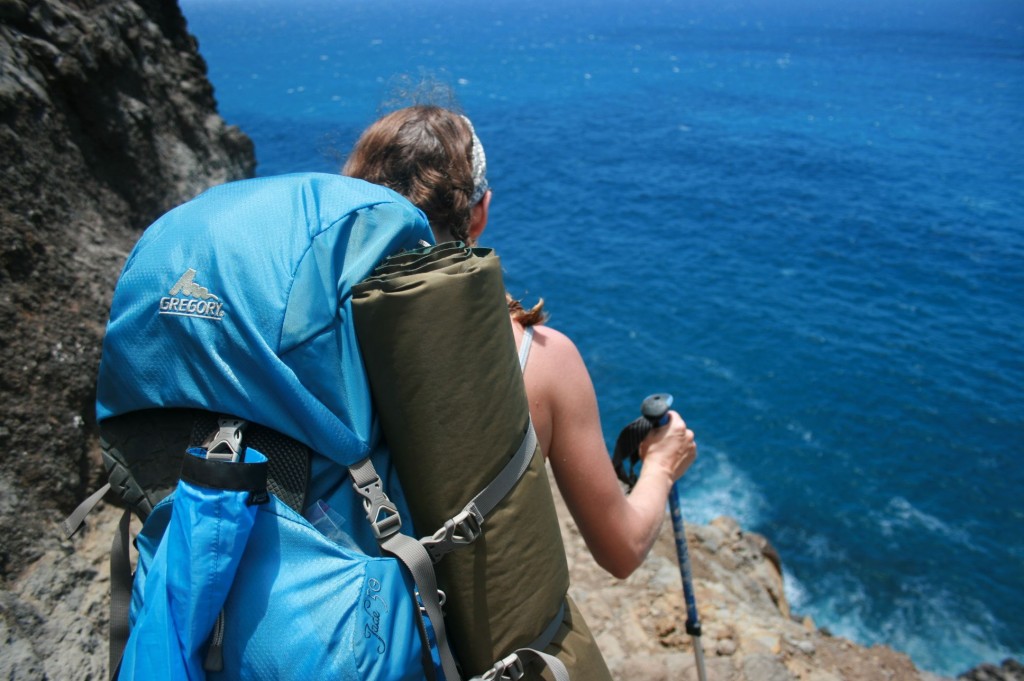 When I hiked down into the Grand Canyon a few years back I may have been the only person on the trail without any trekking poles. People would stop me on the trail and ask me what I was thinking to hike down to the bottom of the Grand with such a huge backpack on and no poles and I was like “huh?”
When I hiked down into the Grand Canyon a few years back I may have been the only person on the trail without any trekking poles. People would stop me on the trail and ask me what I was thinking to hike down to the bottom of the Grand with such a huge backpack on and no poles and I was like “huh?”
For the longest time I thought trekking poles were for the weak – a totally unnecessary and ridiculously expensive piece of gear – until one day I decided to take my ski poles on a winter backpacking trip for help crossing some slippery snowfields. I was hooked.
Trekking poles help provide you with better balance, decrease some of the stress on your lower body joints, and reduce fatigue by transferring some of the weight to your arms. Plus trekking poles help you establish a steady hiking pace – I feel like I just flow rhythmically through the trails when I use them.
I wonder if I had had trekking poles in the Grand Canyon if my calves would still have cramped up so badly that I couldn’t flex my feet. I don’t think I have ever been sorer in my life. The poles may have taken some of the stress off my lower legs and if I ever find myself in the Grand Canyon again I will not be without poles.
It is important to note that trekking poles don’t decrease the total amount of energy you use; they just transfer some of the stress onto your arms so you arms get a pretty good workout when you use poles. Trekking poles are most beneficial to those with weak knees and ankles or for people with terrible balance like me.
How do you choose the best trekking poles? Well first, consider the type of terrain you will be hiking on. If you will be hiking on relatively flat terrain you will probably be happy with a simple hiking staff. If you plan on spending time hiking killer steep and rocky terrain, you are probably going to want to invest in some lightweight antishock poles.
Second, consider how much weight you will be carrying on your back. If you typically carry a heavy load you are definitely going to want to choose high quality standard or antishock trekking poles.
To help choose the best trekking poles, you will also need to consider your size, preferred handle type, weight, and compactness, and your budget. Here are the main types of trekking poles along with some recommendations.
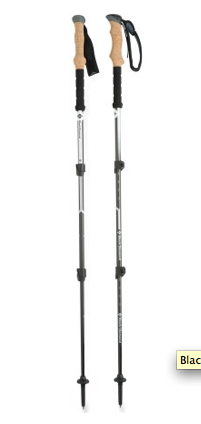 Standard Trekking Poles
Standard Trekking Poles
Standard trekking poles tend to be lighter weight, more compact, and less expensive than antishock trekking poles. They provide added balance and stability but don’t adsorb as much impact as antishock poles. They are a good option for individuals with healthy knees and hips that want a bit of extra stability, but don’t need the extent of shock absorption associated with the antishock poles.
Look for poles that have adjustable wrist straps. Also a bit of padding on the straps can be really nice during long distance hikes. Some trekking poles are more collapsible than others and compactness is important if you plan on taking the poles on an airplane or if you want to secure them onto the side of your pack.
Typically standard poles are very lightweight and the lighter the poles, the more they cost. Lighter weight poles are very advantageous, which makes them easier to swing resulting in less fatigue over time.
Recommended Standard Trekking Poles
- REI Traverse Trekking Poles – great all-around trekking poles
- Black Diamond Alpine Carbon Cork Trekking Poles – ultralight trekking poles
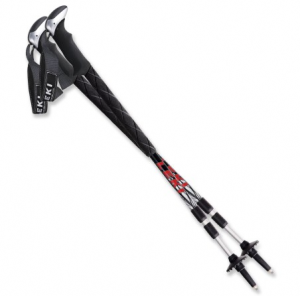 Antishock Trekking Poles
Antishock Trekking Poles
If you have terrible ankles, knees, or hips antishock trekking poles are the way to go. Antishock poles are spring loaded to absorb impact during steep descents decreasing the overall amount of stress on your joints. These poles tend to weigh more and cost quite a bit more than standard poles, but your joints will thank you.
The shock-absorbing feature can be turned off on some antishock poles when it is not needed like when you are hiking on flat ground or uphill.
Recommended Antishock Trekking Poles
- Leki Thermolite XL Aergon Antishock – ultralight shock absorbing poles with ergonomic grips
- Black Diamond Trail Shock Compact – compact, antishock trekking poles
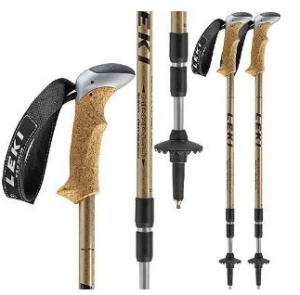 Women’s Trekking Poles
Women’s Trekking Poles
At first I found it silly that companies would make women’s specific trekking poles, but then I thought about it and realized I was carrying all sorts of extra weight around with my man-sized poles. Women’s poles are more compact and feature smaller grips for smaller hands.
Women’s trekking poles are certainly not for all women, but if you are petite they are definitely worth checking out. The more compact and lighter the poles the easier they are to swing and stash in your pack when you are not using them.
Recommended Women’s Trekking Poles
- LEKI Diva Aergon Antishock Women’s Trekking Poles – shock absorbing women’s poles
- REI Relief Shocklight Women’s Trekking Poles – women’s lightweight shock absorbing poles
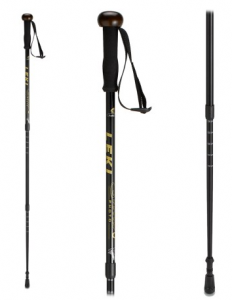 Hiking Staffs
Hiking Staffs
A hiking staff is a single pole that is great for short trips on relatively flat terrain. Hiking staffs are usually adjustable and some come with the antishock feature. They also can include a camera mount built-in under the handle, which is fun since you can unscrew the handle and use the staff as a monopod.
Recommended Hiking Staffs
- Komperdell Walker Antishock Light Trekking Pole – lightweight, shock absorbing walking staff
- Leki Sierra Antishock SLS Staff – antishock walking staff with built-in camera mount